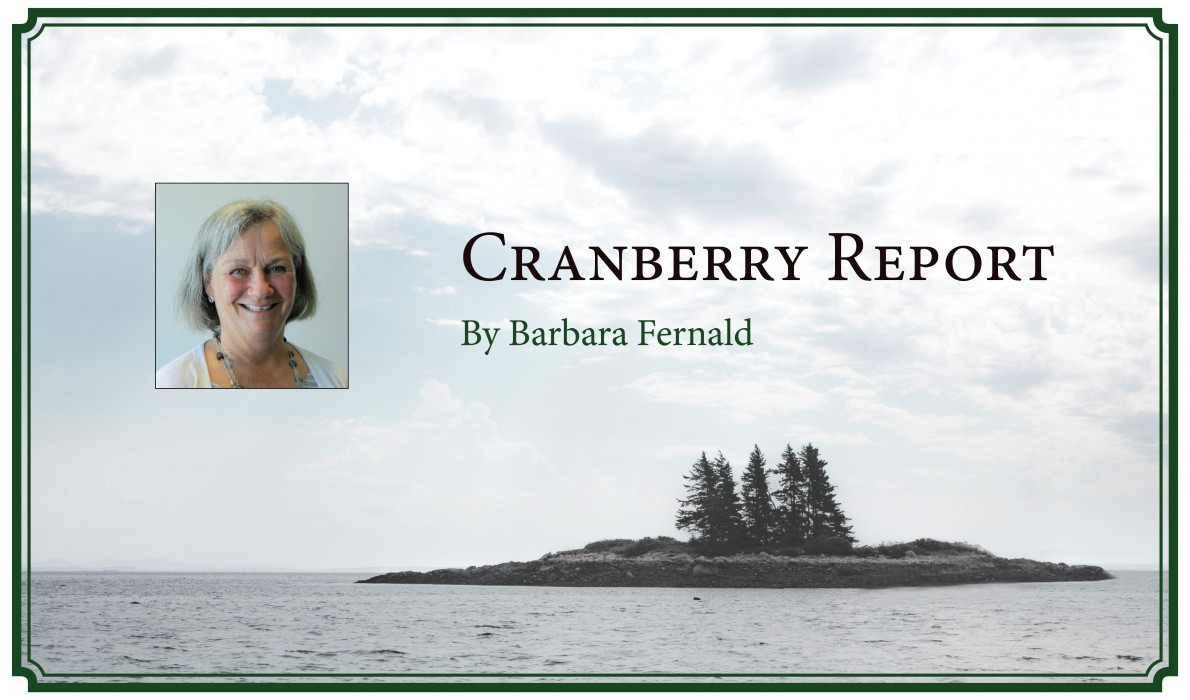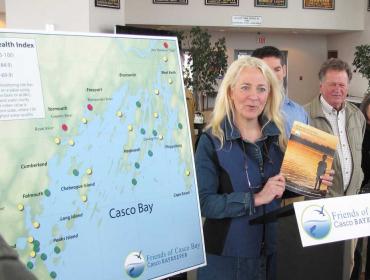Posted May 21, 2019
Last modified May 21, 2019
By Barbara Fernald
As the birds return to the islands, I have to admit that some birds are a little more special to me than others. Nothing beats that incredibly sweet moment when I hear my first hermit thrush of the season. Cardinals, with their variety of calls, used to be scarce on the island. They are more common now, yet still one of my favorites.
Until a few years ago it was rare to see a pileated woodpecker on Islesford. A sighting made for leading conversation on the boat or at the post office. I counted myself lucky if I saw one at all, much less a few times a year.
They are the largest non-extinct woodpecker in North America, about the size of a crow, measuring 16- to 19-inches long with a wing span up to 30-inches. With a flaming red crest, white-striped face, and black body they are striking. Their long necks and triangular-shaped heads are reminiscent of a pterodactyl. Quite the memorable bird at any time.
Two of these woodpeckers made appearances around the island last fall. Sightings on Main Street were no longer rare, but still exceptional. People remarked that maybe a few would settle on the island and we would see them more often. Like the cardinals. Wouldn’t that be exciting?
Perhaps not. On a walk last fall, Bruce and I noticed several large ovate holes in the outside walls of two houses on Sand Beach Road. Inch-long shards of wood littered the ground at both places. The woodpeckers were excavating nesting holes and finding places to roost in the off season. Caretakers were informed and the holes were nailed shut with new shingles.
By mid-winter, the woodpeckers found their way to the four-story tower in the middle of town. (The house is for sale and currently empty.) The first 9-inch hole showed up on the northeast corner of the tower. Tufts of pink fiberglass insulation floated over the neighborhood as the bird continued to excavate.
Within days, a new hole showed up on the southeast side. People stopping to get their mail could hear the woodpeckers drumming from inside the tower. No one had seen anything like this.
There are currently four large holes in the four corners of the tower, along with countless holes of smaller size. It looks like starlings might be taking over some of these holes for nests. In addition to the tower, ten or 11 houses on Islesford have significant damage from the large woodpeckers as well.
I asked Mike Westphal, a caretaker of 30 houses on Great Cranberry, if he had seen pileated woodpeckers attacking houses. He said he’d only ever seen one on a telephone pole, and remarked it sounded a bit like an Alfred Hitchcock movie over here!
I had to agree. Bruce and I discovered that the woodpeckers had made a hole in my family’s summer house, big enough to let starlings inside. Their frantic flying from room to room is downright creepy. I told our caretaker, my brother-in-law Paul, about the hole and he patched it right away. He said, “You know I used to love to see the pileated woodpeckers and now I hate them.”
Two days after Paul patched the hole in our house, my friend Serena told me that the birds had made a new hole through the patch. She and Rick had noticed it when they walked by. Paul has since covered the hole with concrete board. The birds then started to make smaller holes right next to the concrete.
What can we do? We can’t shoot them without breaking the Migratory Bird Act law. There is a fine and jail time if you’re convicted. But, Bruce may have found the solution from a pamphlet published by Texas Parks and Wildlife. Check out the online version for some pretty interesting reading, and birdhouse specs.
It turns out that those pileated woodpeckers really want to live where they want. The answer is to build big birdhouses, put them up at the excavation site and the birds happily move in. This worked for a man in Texas after he repaired 50 woodpecker holes. He built five bird houses and they finally stopped attacking his house.
Bruce hopes to build a bird house. I hope the woodpeckers move in. I cock an ear when I go by the tower, hoping to hear babies and hoping I’ll get the chance to watch baby pileated woodpeckers fledge. I want the pileated woodpeckers to stop wrecking houses and earn back their “cool bird” status.
Barbara Fernald is a jewelry maker who lives on Islesford (Little Cranberry Island).

Contributed by




